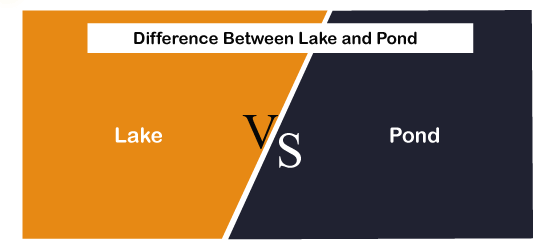Difference between Lake and PondNature has given us some beautiful gifts on earth. The mountains, the lakes, flora, fauna, and the wild species of animals are the beauty of nature. The natural surroundings are soothing and calming for the human mind. Whenever we get a chance to visit somewhere, we choose the mountains and other heavenly gifts of nature. Now, there are a variety of things that nature has to offer. One of these things includes lakes and ponds. Lakes and ponds seem to mean the same. But it is not so. Both are different in two things, i.e., the size and depth. The basic difference is given below.
These are the two basic differences between the two. Lakes and ponds are different from each other. Now, you must be wondering what a lake is and how it contributes to flora and fauna. Well, without further ado, let us discuss about the lakes in detail. A lake is considered as an area that is full of water situated on the land. A lake is not part of any river or ocean. A lake is different from lagoons. Now, what is a lagoon? Well, a lagoon is a small water body, unlike a river or an ocean. A lagoon is found in the coastal regions. 
There are several natural lakes all over the world. These natural lakes are found in the mountain regions where there are glaciers. Many lakes have been drained from the ice age. All the lakes are temporary except for the ones in the mountain regions. Nowadays, many lakes are temporary and are made for industrial purposes. It is interesting to know that the word 'lake' comes from the Middle-English word 'lake,' Germanic word 'lako,' and an Old English word 'lacu' meaning a pool or stream. Many limnologists (aquatic life researchers) define lakes as water bodies that are larger than a pond. The size of a lake ranges from 5 acres to 20 acres. Lakes have the following characteristics.
A majority of lakes are in the northern hemisphere. Canada has around 30,000 lakes, whereas Finland has around 1,80,000 lakes, thereby covering a much larger area than Canada. These all are natural lakes present in particular countries. On the other hand, artificial lakes are used for various purposes like hydroelectric power generation, agricultural use, industrial use, etc. According to some facts, one-third of the water on earth is represented by lakes. There are many kinds of lakes worldwide based on water chemistry, level, volume, and the lakes composed of other liquids. So, let us discuss such kinds of lakes in detail.
These are some of the major kinds of lakes present on earth. Some of the notable lakes on earth include:
These are some of the notable lakes that add to the ecosystem. Lakes are an important part of nature and also give a soothing view to humans. Everything that nature has to offer is essential for the survival of mankind. Along with lakes, ponds also contribute to the ecosystem. Ponds are water bodies that are smaller in size than a lake. A pond can be natural or artificial. Many aquatic plants and animals reside in the ponds. The plants and animals in the pond get affected by various factors like seasons, depth, solar radiations, salinity, etc. One of the major use of a pond is that it is used for agricultural and irrigation purposes. A pond is defined as a body of water that has a surface area of around 10 acres. A pond cannot be beyond 15 acres. Other uses of ponds include:
One of the key features of a pond is that it provides habitat to various biological organisms. This habitat is referred to as pond life. Ponds include water lilies and aquatic animals like frogs, turtles, snakes, etc. Ponds provide both environmental and practical benefits to society. Ponds help in reducing the harmful elements from the environment. They also help us in fighting climate change. Some of the notable ponds are:
These are some of the notable ponds. These are only two points of distinction between a lake and a pond which are mentioned above. Lake and pond add to the biodiversity and the beauty of nature. Both lakes and ponds can be natural or artificial. We should learn to preserve the things that nature has offered us. Thus, lakes and ponds contribute to the survival of humans, plants, and animals.
Next TopicDifference between
|
 For Videos Join Our Youtube Channel: Join Now
For Videos Join Our Youtube Channel: Join Now
Feedback
- Send your Feedback to [email protected]
Help Others, Please Share










